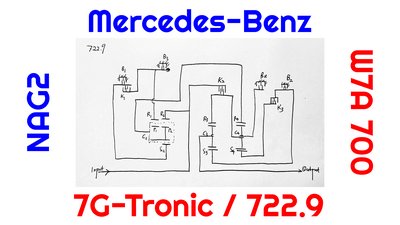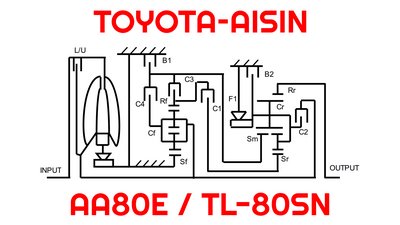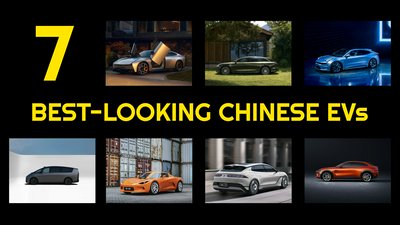techXXX
Cadillac Escalade: Mechanical and Design Evolutions Over 5 Generations
Today, I briefly go over the mechanical and design evolutions of the Cadillac Escalade over its first five generations.
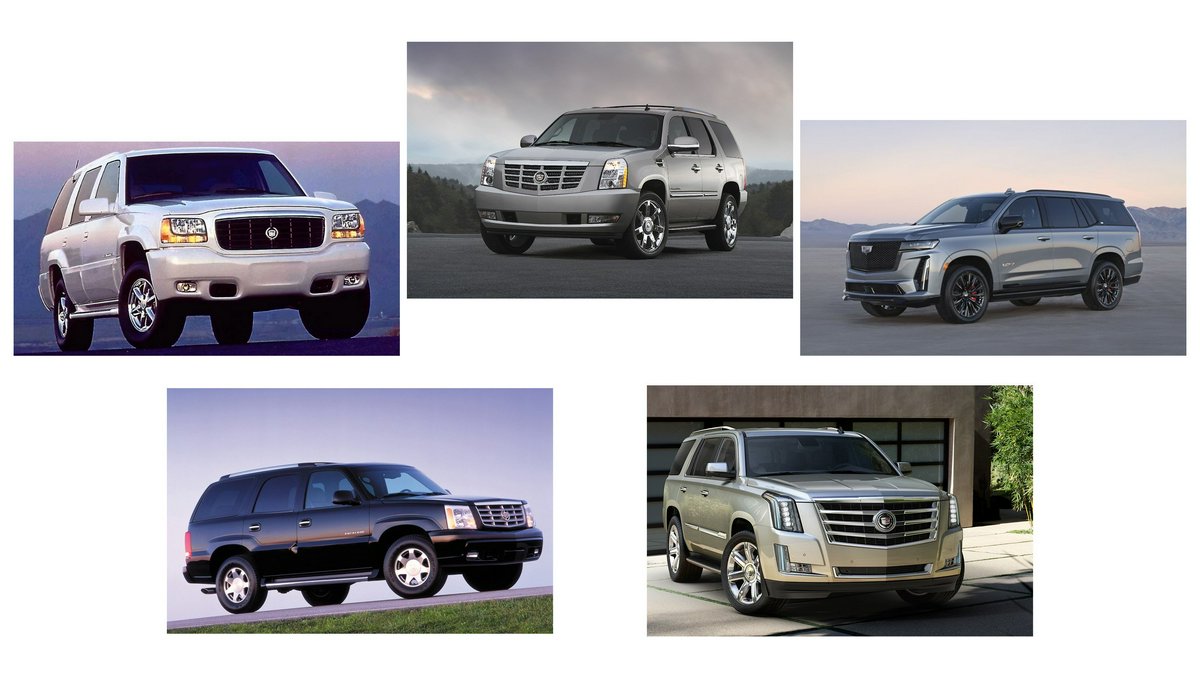
Today, I briefly go over the mechanical and design evolutions of the Cadillac Escalade over its first five generations.
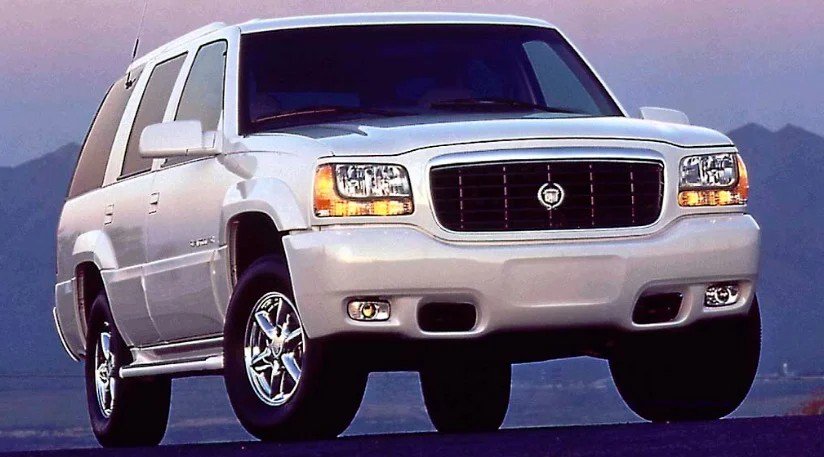
Gen 1: GMT 400
The original Escalade was a rebadged GMC Yukon. It was powered by a 5.7L L31 engine, which was a variant of the original LT-1 found in the 1970’s Corvette and Camaro. This old cast iron engine was thirsty and not powerful. It was mated to a 4L60E four-speed automatic transmission, which is very robust. The original Escalade was also equipped with an Auto-Trac selectable 4WD.
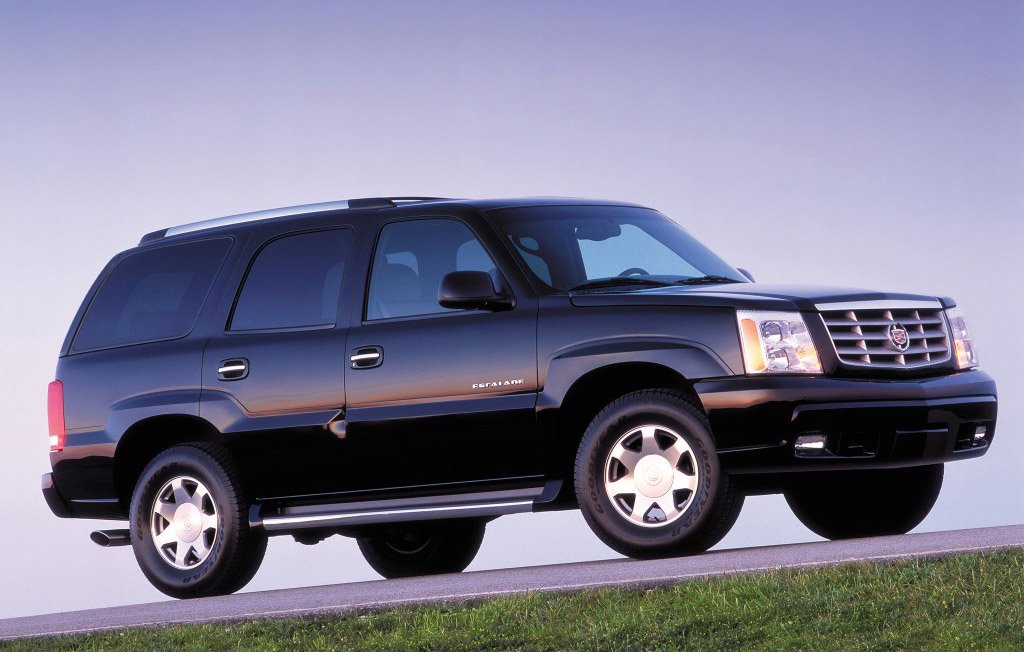
Gen 2: GMT 800
To some, the 2nd-gen Escalade is where the story really began. This time the Escalade added exclusive luxury touches above the GMC Yukon. The extended wheelbase ESV and a pickup variant EXT also became available.
In my opinion, this is the best-sized generation, measuring just over 5 meters at under 199 inches in length and just over 2 meters at 78.9 inches in width. The truck’s angular body shape and clean design were an instant success, quickly establishing the Escalade as the truck to be seen in.
RWD was standard, while the ESV and EXT only had full-time AWD. GM chose not to make it a 4WD vehicle like the Yukon and Tahoe.
The base engine was the LM7 5.3L V8, which was part of the 3rd-gen small block family. It has a cast iron block with aluminum heads. The LQ9 6.0L V8 was available as a high-output unit. RWD models continued to use the 4L60E transmission, while AWD upgraded to the 4L65E, which is stronger.
Today, many love the LQ9-equipped Gen 2 Escalade, thanks to its exceptionally robust powertrain and clean, now-classic styling.
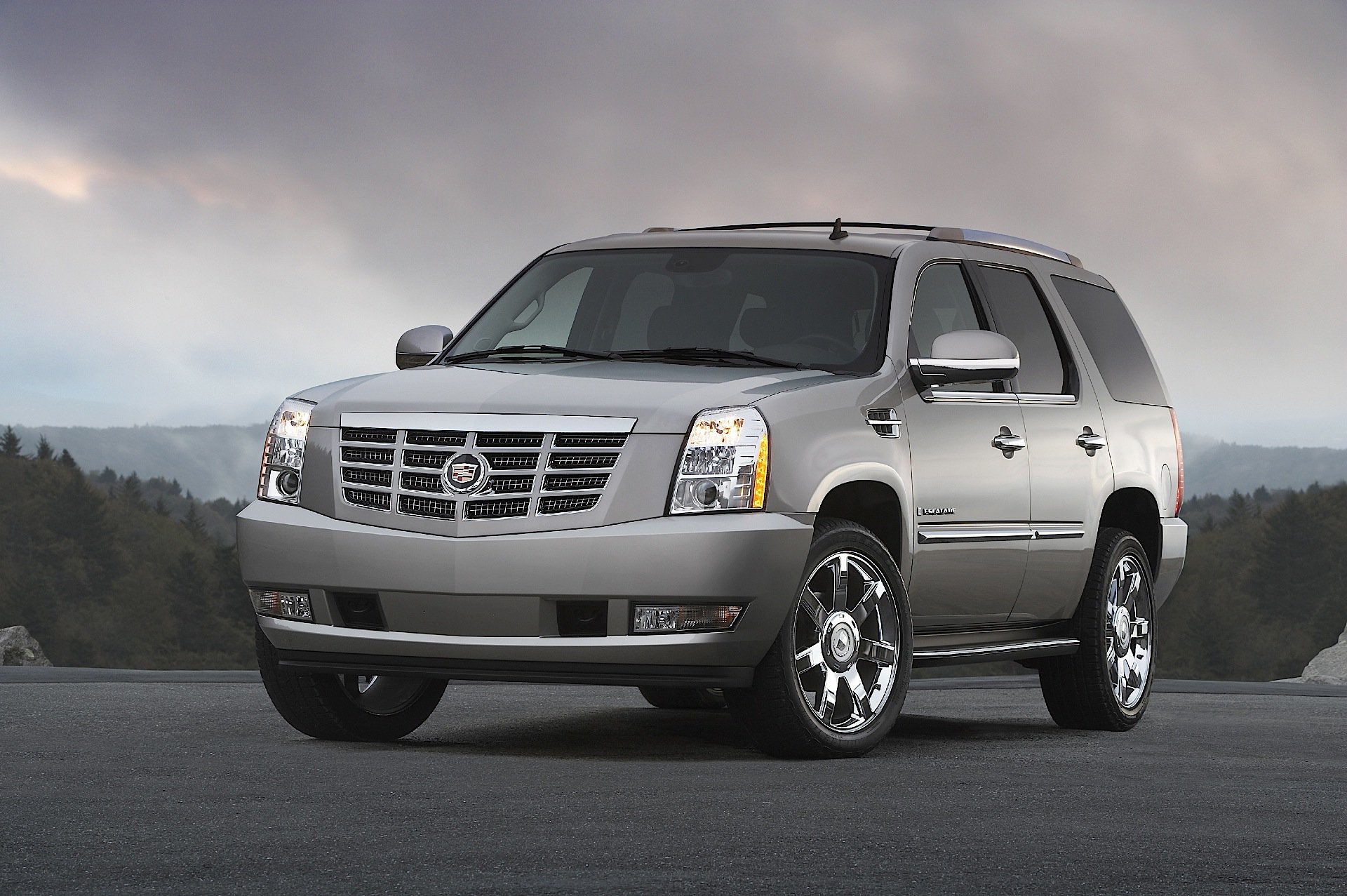
Gen 3: GMT 900
The 3rd-gen Escalade took another step in the luxury direction and fully established the marque as the vehicle for the day’s who’s who. It once again wears a sharp, clean exterior design with a lot of presence and just the right amount of vulgar. This generation grew slightly in size to 5.14 meters or 202.5 inches in length and just over 2 meters or 79 inches in width, which is barely manageable outside North America.
The gas model started with the L92 6.2L V8, which is a variant of the all-aluminum LS3. It was one of the first pushrod engines with variable valve timing (VVT), though with only two settings. The L92 in the Cadillac did not come with Active Fuel Management (AFM) hardware. This made the 2007 and 2008 Escalade a very good option on the used market.
In 2009, GM added a larger fuel pump and a set of larger injectors and made a flex-fuel variant of this engine, coded L9H. This engine is exactly the same as the L92 except for the intake manifold and fueling accessories. Many consider it the best of the 3rd-gen Escalade.
From 2010, GM added AFM to the L92 and got the L94. The system is more durable than German cylinder deactivation technologies. Still, the hydraulic lifters wear out over time, and the deactivated cylinders wear faster, eventually resulting in an out-of-balance engine that will need rebuild.
All gasoline V8s were mated to the 6L80 six-speed automatic transmission. RWD was standard, and ESV and EXT variants had AWD as standard. It is again a full-time AWD system with a planetary center differential.
Unique for this generation, GM introduced a hybrid variant. It was powered originally by the LFA 6.0L engine, which was replaced by the LZ1 with minor revisions. These were mated to a unique two-mode hybrid transmission, which is an eCVT with 3 planetary gearsets. It is very similar to the “Multi-Stage Hybrid” eCVT in the Lexus LC500h and LS500h.
The hybrid started as RWD-only but gained a 4WD variant in 2011. Keep in mind that this is 4WD, not AWD. Hybridization greatly improves fuel economy, resulting in 22MPG and 21MPG for the 2WD and 4WD respectively. That is just 10.7L/100km for the 2WD and 11.2L/100km for the 4WD, saving about 1/3 of fuel, especially for city driving. Unfortunately, the system can fail and the battery will die, very likely taking what the owners save in fuel in the form of repair bills.
In my opinion, the 2008 and 2009 Escalades without AFM are the best on the used market today.

Gen 4: K2UL
The 4th-gen Escalade is a simplified, more modern take on the 3rd generation: even though the truck may look vastly different at first glance, upon scrutiny one would realize how similar it is to its predecessor. Indeed, the two share the exact same wheelbase and total length. On the inside, however, Cadillac made a huge leap and completely modernized the vehicle’s interior and technology integration.
This generation started to use the 5th-gen small block V8 in the form of a 6.2L L86. Compared to the L94 in the last generation, the L86 adds direct injection but is otherwise similar. It is based on the LT1 engine modified for truck use. It also has Active Fuel Management.
GM started the production run with the same 6L80 six-speed automatic transmission in 2014 for the 2015 model year. It was replaced by the 8L90 eight-speed automatic transmission a year later. This was based off the design of the ZF 8HP and is considered rather unreliable. For the 2018 model year, the 10L80 ten-speed automatic transmission replaced the 8L90. It is usually considered as an improvement.
Like the original Escalade, this generation again used 4WD rather than AWD, though RWD was standard.
It appears that the earliest vehicles with the 6L80 are the most reliable used, while the later 10-speed ones are good choices, too.
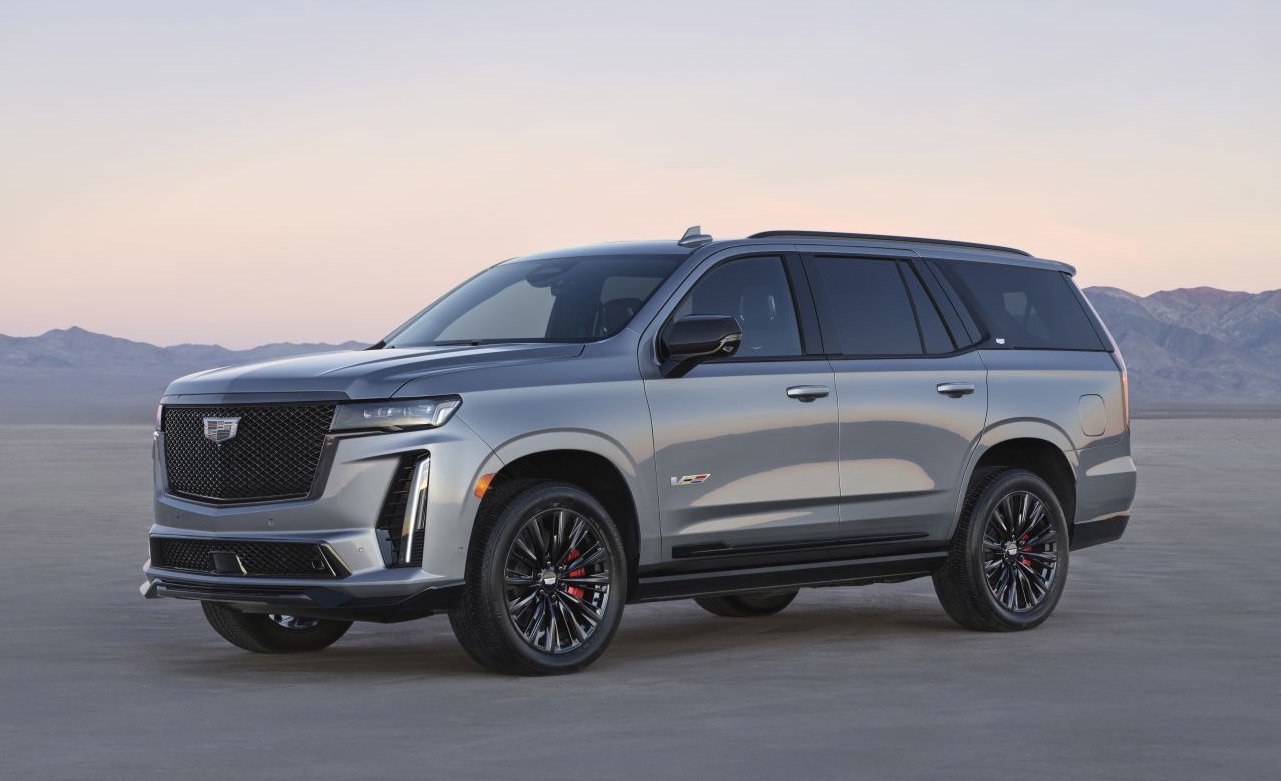
Gen 5: T1UL
Many, including me, consider the latest Escalade a step backwards in exterior styling. The truck is too big and too bland, and its hood is too high. Speaking of being large, the truck has grown significantly in size, measuring just under 5.4 meters or 212 inches in length and over 2.05 meters or 81 inches in width. It is hardly usable outside North America. The ESV is more like a minibus and looks almost comical.
On the inside, however, GM certainly did some things right. It has a luxurious, high-tech interior that rivals the German marques and the Lincoln Navigator. Its 36-speaker AKG sound system joined the speaker-count war that is being waged across full-size SUVs today.
This generation continues to use the 10L80 transmission with RWD and 4WD both available.
The base model uses a 6.2L L87 engine, which is a variant of the L86 with “Dynamic Fuel Management” instead of the old AFM. Dynamic Fuel Management allows the engine to run in 17 different cylinder patterns, instead of always deactivating the same 4 cylinders. It not only improves fuel economy but in theory should reduce wear on the cylinders and pistons.
GM also added a 3.0L LM2 Duramax inline-6 diesel engine option. This is an all-aluminum engine with cast iron liners and cast aluminum pistons. It is being replaced by the LZ0 with steel pistons. With the same torque output and a lot less power compared to the L87, this diesel engine is simply too small for a truck this large. It is mostly intended to be exported to countries like China with high taxes on engine displacement.
Last but certainly not least, there is the LT4-powered Escalade-V. The LT4 can be considered the LT1 with features of the LS9. It uses the same 5th-gen block with dry-sump lubrication, improved heads, forged pistons, and stainless-steel exhaust manifolds. It uses a ridiculously large 2.7L Eaton TVS Roots-type supercharger and delivers about the same power as an L87 and an LM2 put together.
Seeing that this truck is quite ugly and overladen with technology, I think only the Escalade-V will be loved by enthusiasts in the future.
